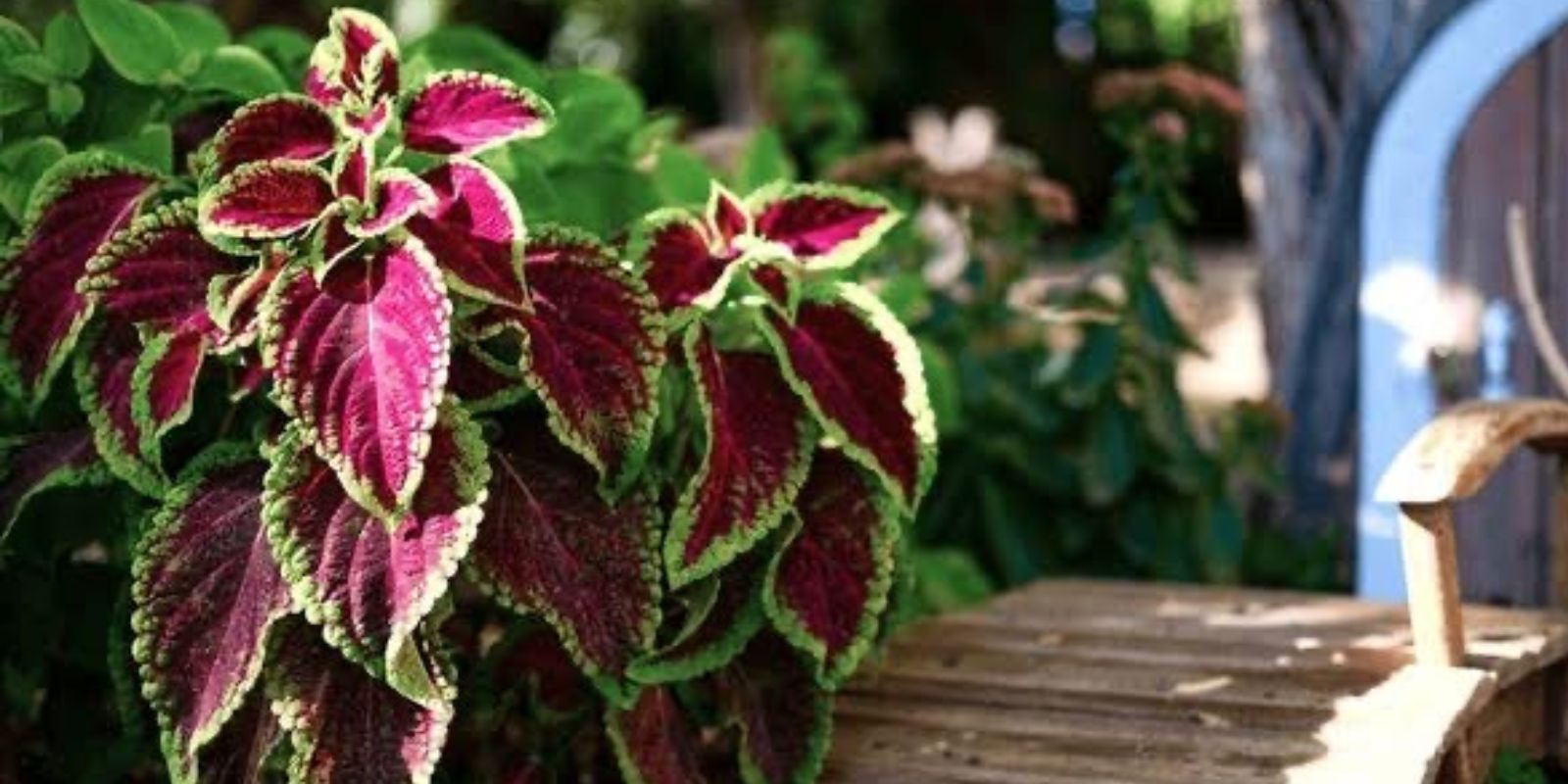Giant Coleus (Plectranthus scutellarioides) is a stunning, low-maintenance plant that thrives in shaded areas while offering vibrant, multicolored foliage. Its bold red, purple, and green leaves create a dramatic visual impact, making it an ideal addition to gardens, patios, or any outdoor décor. Whether you’re a gardening enthusiast or a beginner, this guide will provide you with everything you need to know about cultivating and caring for Giant Coleus.
Why Choose Giant Coleus?
Giant Coleus is not just another leafy plant; it’s a statement piece. Its unique, oversized foliage with bold, contrasting colors can transform any outdoor space into a vibrant oasis. In addition to its aesthetic appeal, Giant Coleus is easy to care for, making it suitable for both experienced gardeners and novices alike.
Step-by-Step Guide to Growing Giant Coleus
1. Selecting the Right Location
Light Requirements:
Giant Coleus thrives in partial to full shade, though it can tolerate some morning sun. Too much direct sunlight, especially during the hottest parts of the day, can scorch its leaves and cause the colors to fade. Choose a location that offers dappled shade or protection from harsh sunlight.
2. Preparing the Soil
Ideal Soil Type:
For healthy growth, use well-draining, fertile soil that’s rich in organic matter. Adding compost or aged manure to the planting bed will improve soil structure and provide essential nutrients.
pH Level:
Aim for a slightly acidic to neutral soil pH, ideally between 6.0 and 7.0. Test your soil and amend it if necessary to ensure the optimal environment for Giant Coleus.
3. Planting Giant Coleus
Starting from Seeds or Cuttings:
- If starting from seeds, sow them indoors 8-10 weeks before the last frost date. Press the seeds lightly into the soil without covering them completely, as they require light to germinate.
- For cuttings, take a 4-6 inch stem from a healthy plant, remove the lower leaves, and place the cutting in water or directly into moist soil. Roots will typically develop within 1-2 weeks.
Spacing:
Plant Giant Coleus about 12-18 inches apart to allow for adequate airflow and room for its large foliage to spread.
4. Watering
Giant Coleus requires consistently moist soil, but overwatering can lead to root rot. Follow these tips to get the balance right:
- Water deeply once the top inch of soil feels dry.
- Avoid letting the soil become soggy by ensuring proper drainage.
- Use mulch around the base of the plant to retain soil moisture and regulate temperature.
5. Maintaining Ideal Temperature and Humidity
Temperature Range:
Giant Coleus thrives in temperatures between 60-85°F (16-29°C). It’s a tropical plant that doesn’t tolerate frost, so ensure it’s protected in cooler climates.
Humidity Levels:
While it prefers moderate to high humidity, Giant Coleus can adapt to lower humidity with proper care. In dry climates, mist the leaves or place a tray of water near the plant to increase humidity.
6. Feeding Your Giant Coleus
Fertilization Schedule:
Feed your Giant Coleus with a balanced, water-soluble fertilizer every 4-6 weeks during the growing season (spring through early fall). Fertilizers with equal parts nitrogen, phosphorus, and potassium (e.g., 10-10-10) are ideal for promoting vibrant foliage.
7. Pruning and Maintenance
Pruning Tips:
- Regularly pinch off the growing tips to encourage bushier growth and prevent the plant from becoming leggy.
- Remove any yellowing or damaged leaves to maintain the plant’s health and appearance.
- If the plant flowers, you can either leave the blooms or pinch them off to redirect energy back to the foliage.
Troubleshooting Common Issues
1. Leaf Scorch
Symptoms: Brown, crispy edges on the leaves.
Cause: Too much direct sunlight.
Solution: Relocate the plant to a shadier spot or provide shade cloth for protection.
2. Pests
Common Pests: Aphids, whiteflies, and spider mites.
Solution: Use insecticidal soap or neem oil to control infestations. Regularly inspect the plant for pests and address issues early.
3. Root Rot
Symptoms: Yellowing leaves and a mushy stem base.
Cause: Overwatering or poor drainage.
Solution: Allow the soil to dry out between waterings and ensure the pot or planting bed has proper drainage.
Overwintering Giant Coleus
In regions with frost, Giant Coleus is often grown as an annual. However, it can be overwintered indoors:
- Before the first frost, dig up the plant and transplant it into a pot with well-draining soil.
- Place the pot in a bright, warm location indoors.
- Water sparingly during winter months, keeping the soil slightly moist.
Creative Uses for Giant Coleus in Outdoor Spaces
- Container Gardening: Grow Giant Coleus in large pots or containers for easy mobility and design versatility.
- Garden Borders: Use the plant to create vibrant borders along walkways or flower beds.
- Companion Planting: Pair it with other shade-loving plants like hostas or ferns for a lush, tropical look.
- Patio Décor: Place potted Giant Coleus on patios or balconies to add a burst of color to your outdoor seating area.
Why Giant Coleus is a Must-Have Plant
- Low Maintenance: Ideal for busy gardeners or those new to plant care.
- Vibrant Foliage: Adds dramatic color to any space, even in low-light conditions.
- Versatile: Suitable for gardens, patios, and indoor settings.
- Fast-Growing: Quickly fills in spaces with its large, colorful leaves.
Engage with Your Garden Community
Have you tried growing Giant Coleus? Share your experiences, tips, or questions in the comments! Let’s exchange ideas and celebrate the beauty of this vibrant plant.

